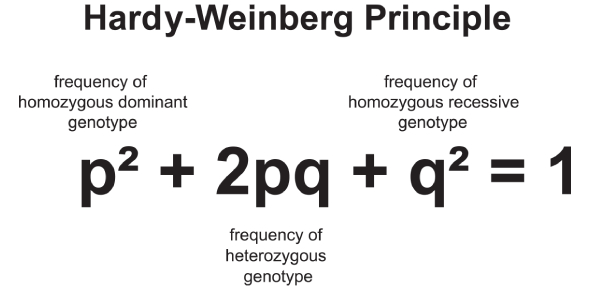Cats are among the most beloved animals on Earth, generating many intriguing questions surrounding their populations. One powerful tool for tackling these questions is the Hardy-Weinberg equation. This mathematical model can reveal insights into the genetic makeup of a population, including trait frequencies and the rate of genetic mutation. By employing this tool, we can gain a deeper understanding of the population dynamics within a hypothetical cat population.
What is the Hardy-Weinberg Equation?

The Hardy-Weinberg equation is a mathematical formula used to outline the genetic composition of a population. It’s founded on the Hardy-Weinberg equilibrium principle, which asserts that a population’s genetic makeup remains stable over time, barring influences such as migration or selection. This equation can determine the frequency of specific traits in a population and the likelihood of two individuals sharing the same trait.
What Questions Can the Hardy-Weinberg Equation Address?
Utilizing the Hardy-Weinberg equation facilitates a clearer grasp on a hypothetical cat population’s dynamics. It allows us to:
- Calculate the frequency of specific traits in the population, like coat or eye color.
- Determine the probability of two cats in the population sharing the same trait.
- Estimate the rate of genetic mutation and gene flow within and between populations.
How Does the Hardy-Weinberg Equation Help Us Understand Cat Populations?

This mathematical tool can enlighten us about the genetic composition of a cat population. By determining specific trait frequencies, we gain insights into the genetic diversity within a population. The equation can also shed light on the rate of genetic mutation and its potential impact on population health. Moreover, it helps ascertain the probability of two cats in the population sharing the same trait, valuable for understanding genetic relationships.
What Other Uses Does the Hardy-Weinberg Equation Have?
The Hardy-Weinberg equation has applications extending beyond feline populations. It can estimate trait frequencies in various populations, including humans, plants, and even bacteria. Furthermore, it can calculate gene flow rates between different populations, providing insights into the genetic relationships between species.
What Are the Limitations of the Hardy-Weinberg Equation?

Despite its utility, the Hardy-Weinberg equation has limitations. It does not account for the impacts of migration, selection, or other influences on population genetics. Moreover, it presumes the population is in equilibrium, i.e., the mutation and gene flow rates are constant over time.
In conclusion, the Hardy-Weinberg equation is a potent tool for deciphering the genetic composition of populations, including hypothetical cat populations. It enables us to estimate trait frequencies, genetic mutation rates, and gene flow. However, it’s essential to remember its limitations, as it doesn’t account for factors like migration or selection. Nonetheless, it remains a valuable resource for understanding the dynamics of cat populations.
Qucik lookup out other articles. “How to Stop My Dogs Breath From Smelling Like Fish?” and “How Can a Company Find Its Way Out of a Market Characterized by Pure Competition?“
